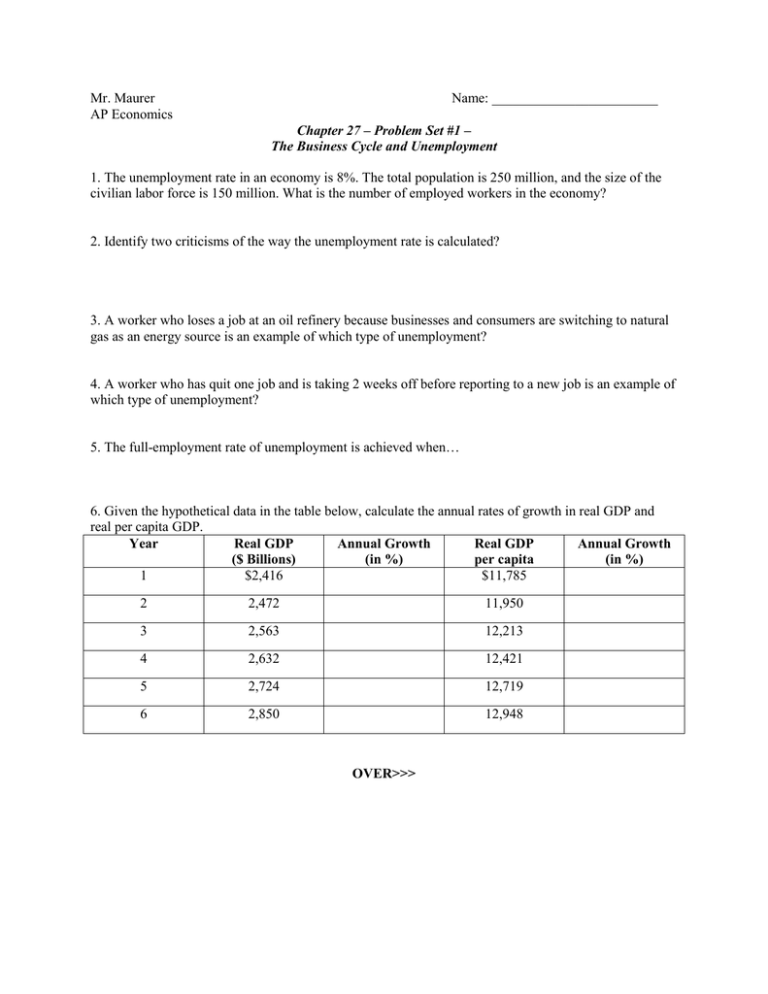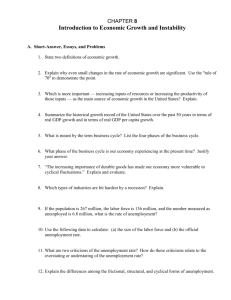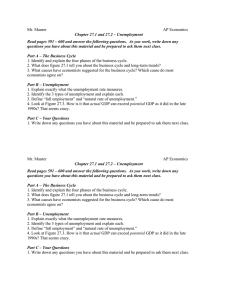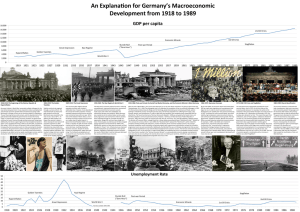Click Here for a Copy
advertisement

Mr. Maurer AP Economics Name: ________________________ Chapter 27 – Problem Set #1 – The Business Cycle and Unemployment 1. The unemployment rate in an economy is 8%. The total population is 250 million, and the size of the civilian labor force is 150 million. What is the number of employed workers in the economy? 2. Identify two criticisms of the way the unemployment rate is calculated? 3. A worker who loses a job at an oil refinery because businesses and consumers are switching to natural gas as an energy source is an example of which type of unemployment? 4. A worker who has quit one job and is taking 2 weeks off before reporting to a new job is an example of which type of unemployment? 5. The full-employment rate of unemployment is achieved when… 6. Given the hypothetical data in the table below, calculate the annual rates of growth in real GDP and real per capita GDP. Year Real GDP Annual Growth Real GDP Annual Growth ($ Billions) (in %) per capita (in %) 1 $2,416 $11,785 2 2,472 11,950 3 2,563 12,213 4 2,632 12,421 5 2,724 12,719 6 2,850 12,948 OVER>>> 7. The following table gives statistics on the labor force and total employment during year 1 and year 5. Make the computations necessary to complete the table. (Population figures are in thousands.) Labor force Employed Unemployed Year 1 84,889 80,796 Year 5 95,453 87,524 Unemployment rate a. How is it possible that both employment and unemployment increased? b. Would you say that year 1 was a year of full employment? Explain. c. Would you say that year 5 was a year of full employment? Explain. 8. Define the business cycle. Why do some economists prefer the term “business fluctuations” to the term “business cycle?” 9. What is the natural rate of unemployment? Why is the natural rate of unemployment subject to revision?









